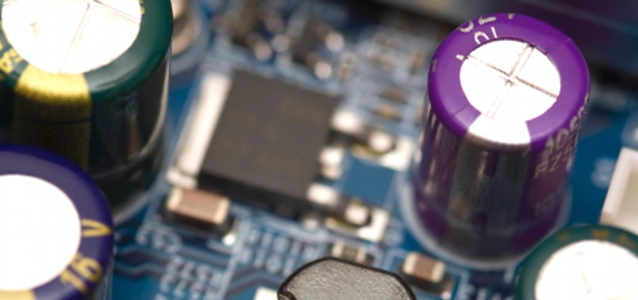
© mchudo dreamstime.com
Business |
Market expands for MEMS pressure sensors in Medical Electronics
The market for microelectromechanical systems (MEMS) used as pressure sensors in medical electronics is set to grow 7 percent this year, aided by the use of disposable devices as well as respiratory monitoring, according to IHS.
Revenue for pressure sensors in medical electronics applications will reach $137.6 million in 2012, up 6 percent from $129.2 million in 2011. Growth will be steady over the next few years, with revenue projected to reach $186.7 million by 2016.
“Although MEMS pressure sensor revenue from medical electronics is relatively small compared to pressure sensor revenue in the MEMS automotive segment, medical electronics belongs to the so-called high-value category, where average selling prices can be much higher than in the other MEMS segments,” said Richard Dixon, Ph.D., principal analyst for MEMS & sensors at IHS. “This makes it a profitable and attractive market for MEMS suppliers.”
Besides medical electronics, the high-value MEMS pressure category also includes the industrial and military/aerospace segment, which accounts for the remaining half of revenue for the overall high-value MEMS space, worth $283.5 million this year.
The pressure’s on
Pressure sensors this year will become the leading type of MEMS device, projected to generate revenue worth $1.5 billion. For medical applications, the technology for MEMS pressure sensors requires expertise in making accurate low-pressure measurement devices, used for invasive and non-invasive applications alike.
Pressure sensors for invasive applications, such as the monitoring of blood pressure, are low-cost consumables. In comparison, pressure sensors for non-invasive uses, such as sleep-disorder sensing, are reusable devices that cost considerably more.
Disposable devices are not disposable sources of revenue
The most common medical pressure sensor is the disposable catheter, used to monitor blood pressure during the many millions of operations performed each year. Catheter-based devices must be especially small, measuring blood pressure and micro vascular resistance in the vicinity of the heart.
The combination of low pressure measurement with small device size poses a challenge to manufacturers, but those that possess the technology to address the market include, among others, Honeywell of New Jersey; General Electric of New York; and Silicon Microstructures, a subsidiary of Elmos Semiconductor of Germany.
Another disposable application for MEMS pressure sensors is the infusion pump—a device that introduces fluids, medication or nutrients into a patient’s circulatory system. Infusion pumps must be simple, low-cost pressure devices intended to be thrown away after the infusion treatment is completed.
Use of this type of pressure sensor amounted to well over 60 million units in 2011.
Proper respiration counts—or the sensors come in
After disposables, respiratory monitoring is the next biggest earner for medical pressure sensing. While the number of pressure devices that ship is much lower in this category than in disposables, millions of respiratory-treatment-related machines are sold yearly, and the sensors are significantly more expensive than disposables.
An example of a respiratory monitoring device is the Continuous Positive Air Pressure (CPAP), used mainly to treat sleep apnea at home. America is the main market today for respiratory monitoring devices, as the treatment is reimbursed in health care programs. Leading suppliers include Philips Respironics, a unit of Royal Philips Electronics from the Netherlands; and ResMed of San Diego, Calif.
Also included in respiratory monitoring is oxygen therapy, which administers or increases the amount of oxygen in the blood. An aging population, as well as the increasing prevalence of chronic obstructive pulmonary disease, drives this market. Honeywell and GE are major suppliers of sensors to oxygen therapy machines, which typically include one low-pressure silicon sensor and one high-pressure variant that is steel encapsulated and oil filled.
Ventilators make up another separate market for pressure sensors, serving applications like the treatment of lung injuries, asthma, and adult or acute respiratory distress syndrome. Equipment sales here, however, are very much lower than in the other respiratory-related applications.
Other areas count too
Pressure sensors also figure in the measurement of vital signs. Machines in this category employing the sensors include benchtop or mounted-central-station patient monitors, as well as multiparameter monitoring devices. Low-end instruments include at least one non-invasive pressure sensor; midrange counterparts comprise one or two such devices; and devices in the high-end have both non-invasive and invasive pressure sensing, as well as additional respiratory pressure sensing. Viable markets can be found in Europe and North America, but growth is fastest in Asia-Pacific.
In the area of implantable devices, pressure sensors are used in cardiac monitors, glaucoma monitors and cranial pressure monitors. While the market for these monitors is in its infancy today, their future potential is significant. A cardiac sensor, for instance, allows patients to be monitored from the home, and the value to national health systems is huge in terms of savings to be obtained from eliminating repeat hospital visits for tests.
The supply chain rendered
The major suppliers of MEMS pressure sensors today for medical electronics applications include Honeywell, GE Sensing of Massachusetts, Omron from Japan, Freescale Semiconductor of Texas, MEAS (Measurement Specialties) of Virginia, TDK Epcos from Japan, Memscap from France, Merit Sensor Systems of Utah, Panasonic from Japan, Hokuriku from Japan, and another 10 or so smaller companies.
The supply chain also includes foundry suppliers like Semefab from the United Kingdom, which supplies die to 1LP or 2LP packagers.
